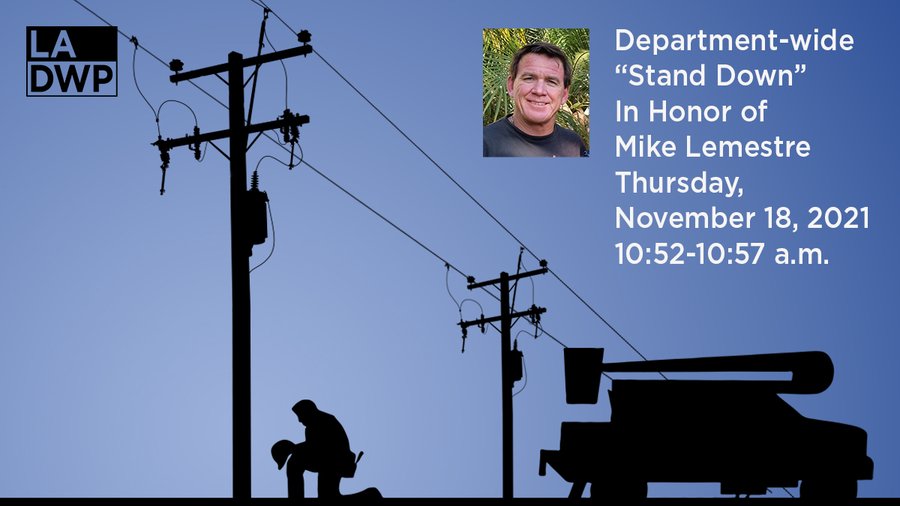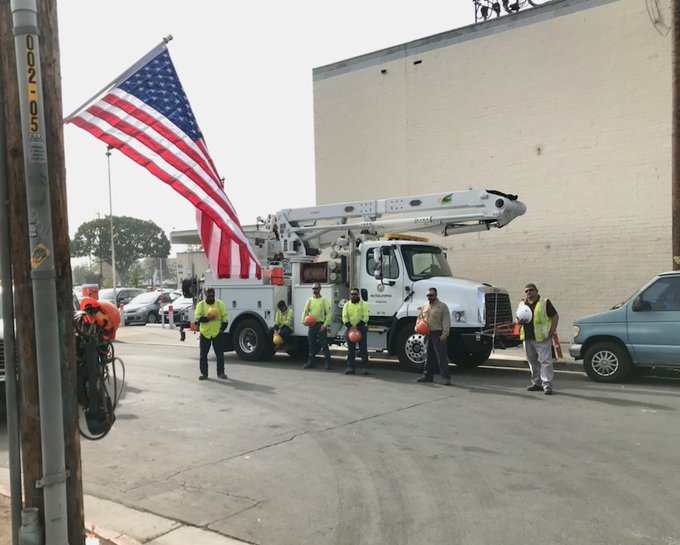Interior Approves Second Major Offshore Wind Project
November 29, 2021
by Peter Maloney
APPA News
November 29, 2021
The Department of the Interior (DOI) last week said it approved a 132-megawatt (MW) wind farm off the coast of Rhode Island.
It is the second commercial scale offshore wind farm approved by the DOI.
In July, the federal agency approved Vineyard Wind I, an 800-MW project being jointly developed by Copenhagen Infrastructure Partners and Avangrid Renewables, about 15 miles south of Martha’s Vineyard and 35 miles from the Massachusetts coast. The project is scheduled to come online in mid-2024.
The newly approved South Fork Wind project, being jointly developed by Ørsted and Eversource, is sited about 19 miles southeast of Block Island, Rhode Island, and 35 miles east of Montauk Point, New York.
The DOI’s Bureau of Ocean Energy Management (BOEM) approved the construction and operation of 12 or fewer turbines off Rhode Island. The project is on track to be fully permitted by early 2022, according to the developers, who say they will soon ramp up construction activities. Prior to construction, South Fork Wind must submit a facility design report and a fabrication and installation report, providing details for how the facility will be fabricated and installed. The project is expected to come online in late 2023.
In March, a group including the New York State Public Service Commission and the Long Island Power Authority (LIPA), agreed to and adopted a plan to build a 7.6-mile transmission line to link the South Fork Wind project to New York State’s power grid via a substation in the Town of East Hampton in Suffolk County on the east end of Long Island. The transmission line is due online by 2023.
In 2017, LIPA’s board of trustees approved a power purchase agreement with the developers of the South Fork Wind project.
The approvals help New York State move closer to its goal of economy-wide carbon dioxide neutrality and a zero-carbon dioxide emissions electricity sector by 2040. The state’s energy plan includes a commitment to develop over 1,800 MW of offshore wind by 2024.
In a wider framework, the approval of the South Fork Wind project helps support the goal set by the administration of President Joe Biden to deploy 30 gigawatts (GW) of offshore wind energy by 2030.
As part of that effort, the administration is looking at the potential sale of up to seven new offshore leases for wind power projects by 2025.
BOEM said it expects to review at least 16 construction and operations plans of commercial offshore wind energy facilities by 2025, representing more than 19 GW of clean energy.
Northern Wasco PUD’s APPA-Funded Project Will Support Rural EV Adoption
November 29, 2021
by Peter Maloney
APPA News
November 29, 2021
Northern Wasco County Public Utility District in Oregon, along with several other Northwest utilities, has won a Demonstration of Energy & Efficiency Developments (DEED) grant from the American Public Power Association to expand electric vehicle adoption in rural areas.
Northern Wasco PUD, the sponsoring utility, is sharing the $125,000 DEED grant for the Self-Service Ride & Drive and Rural EV Sharing programs with several other utilities.
They are Ashland Electric Department, Central Electric Coop, Consumers Power, Emerald People’s Utility District, Eugene Water and Electric Board, Midstate Electric Coop, all in Oregon, and Peninsula Light cooperative in Gig Harbor, Wash. Other utilities could also join the program.
Both DEED sponsored projects are alternatives to traditional, utility-sponsored ride and drive events and rural car-sharing programs and are intended to serve as a more cost-effective, accessible, and sustainable path for utilities that want to introduce their customers to electric vehicles.
“It is one program with two use cases,” Connor Herman, program manager at Portland. Ore. Based Forth Mobility, said. Northern Wasco PUD is partnering on the DEED project with Forth, which designed and is implementing the program.
Both aspects of the program are an opportunity for people to test drive electric vehicles, either as a short-term test drive or as a car share similar to the way Zipcar and other services work. “It is the best way to break down misconceptions about EVs,” Herman said. “Typically, rural areas do not have a lot of electric vehicles. Essentially the idea is to use car-sharing technology to provide access to EVs.”
Forth is providing the electric vehicles for the program and handles the insurance and cleaning for the vehicles, as well as marketing and third-party software. Right now, there are 12 cars in the program, mostly Chevy Volts with prospects for Nisan Leafs and BMW i3s vehicles in the works.
Rates for using the electric vehicles are not yet finalized but will likely be by the hour or the day, perhaps in the range of $4 an hour or $40 per day and two free hours for a first test drive, Herman said.
Participating utilities are responsible for finding and providing sites for the vehicles. Unlike Zipcar and other similar services, the electric vehicles in the utility programs would have to be returned to the starting location, typically a location with an available charging port.
Emerald People’s Utility District has “a really good spot in mind,” Rob Currier, the utility’s power resources supervisor, said. Emerald is looking at a rural location in Veneta, Ore., west of Eugene and near low-income housing and an existing charging station installed as part of the West Coast Electric Highway initiative.
That charging station is being revamped to a Level 3 charger and a couple of Level 2 chargers. Emerald is providing about $17,000 in funding to help revamp the station.
“We are hoping to have a vehicle hosted there and a public parking spot. We are hoping to get it finalized pretty soon,” Currier said. “We feel rural areas are underserved with EV structure and programs.”
“Ride and drive is a really powerful way to demo EVs,” Currier said. “This is a way to have one of these events constantly on and ready go.”
Emerald’s board is also in favor of the project. “It is a benefit to all of our customers because, if done well, it provides an incentive to charge EVs off peak,” and that brings in revenues and helps improve the utility’s load factor, which can push down rates for everyone, Currier said.
The rural EV sharing project is not Emerald’s first DEED grant. Last year, the utility won a grant that it used to analyze data streams from its Advanced Metering Infrastructure (AMI) system. That program was very useful and resulted in an ongoing relationship with the participating vendor, The Energy Authority, Currier said.
And even though Emerald already has a relationship with Forth, the utility didn’t have the “bandwidth” to take on another DEED project, but fortunately Northern Wasco stepped in, Currier said. Without the DEED grant and Northern Wasco’s sponsorship, “I don’t think we would have been able to do the EV demonstration project,” Currier said.
The program also has many of the attributes that make for a successful DEED application, Currier said, specifically, “it is a unique application of technology, and it is replicable and shareable.
For Northern Wasco, the EV car share program is a first. Forth had been discussing the project with the Bonneville Environmental Foundation for about two years and, after talking with about half a dozen utilities in the region, the DEED opportunity came up.
As a DEED member, “Northern Wasco PUD was excited to be the leading applicant to move this project forward,” Justin Brock, customer service and key accounts manager at Northern Wasco, said via email.
“Getting behind the wheel of an EV is a huge catalyst for getting folks interested in buying one themselves,” Brock said. In a smaller community, he added, “there aren’t a lot of choices in the car market here yet. So, we hope to use this program to get our customers experienced with EVs and test this new technology out in a no-pressure environment.” In addition, he said, “The learnings and lessons of this project will ideally be replicated by public power utilities around the country.”
NREL Reports Continuing PV And PV-Plus-Storage Cost Declines
November 29, 2021
by Peter Maloney
APPA News
November 29, 2021
A new report from the National Renewable Energy Laboratory (NREL) finds continued cost declines across residential, commercial, and industrial photovoltaic (PV)-plus-storage systems, with the greatest cost declines for utility-scale systems. Standalone storage systems also saw cost declines.
The findings were included in NREL’s U.S. Solar Photovoltaic System and Energy Storage Cost Benchmark: Q1 2021, which was released this month. Starting with NREL’s 2020 PV benchmark report, NREL began including PV-plus-storage and standalone energy storage costs in its annual reports.
Meanwhile, NREL’s new report also finds that costs continued to fall for residential, commercial rooftop, and utility-scale PV systems—by 3%, 11%, and 12%, respectively, compared to last year.
In a change from previous years’ reports, balance of systems costs have increased or remained flat across sectors this year. However, this increase in balance of systems cost was offset by a 19% reduction in module cost, causing overall costs to continue their decade-long decline.
NREL said that the report’s authors used a bottom-up cost modeling approach that accounts for all system and project development costs incurred during installation to model the costs for residential, commercial, and utility-scale PV systems, with and without energy storage.
They also modeled typical installation techniques and business operations from an installed-cost perspective. NREL said this strategy ensures that hardware costs reflect the actual purchase price of components as well as the sales price paid to the installer, including profits. The benchmarks assume a business environment unaffected by the novel coronavirus pandemic and represent national averages.
“As the costs of construction-related raw materials have increased during the pandemic, the total balance of systems material cost has either stayed relatively the same, or, in some cases, increased by a marginal percentage compared to the balance of systems cost reported in the Q1 2020 benchmark report,” said NREL’s solar and storage techno-economic analyst Vignesh Ramasamy.
“The major cost drivers that helped reduce the system installation costs of PV and energy storage systems in Q1 2021 were lower module cost, increased module efficiency, and lower battery pack cost,” he said.
In a second report, Photovoltaic Module Technologies: 2020 Benchmark Costs and Technology Evolution Framework Results, NREL researchers calculate a minimum sustainable price (MSP) — the price necessary to support a sustainable business over the long term — for modules.
Specifically, the report calculates that price by using bottom-up manufacturing cost analysis and applying a gross margin of 15%.
Electric Cities of Georgia Members Enter Solar Power Supply Agreement With Walmart
November 23, 2021
by Paul Ciampoli
APPA News Director
November 23, 2021
Electric Cities of Georgia (ECG) has worked with Walmart to secure a renewable energy customer agreement with 14 ECG members that will supply 26 megawatts (MW) of utility-scale solar power to Walmart facilities in their territories.
ECG, which is based in Atlanta, Ga., is a non-profit organization providing strategic and technical services to 52 public power communities with utility operations.
The agreement follows discussions between ECG and Walmart on how Walmart could work toward its renewable energy commitment by purchasing energy from a qualified renewable solar facility, ECG noted on Nov. 19.
During this process, several ECG members met with their council and board members to agree to the terms and discuss the benefits of this initiative.
ECG noted that in an article published by the American Public Power Association (APPA) in December 2020, Patrick Bowie, Utility Director for the City of LaGrange, Ga., said that buying renewable solar power through the city allows Walmart to realize better prices and keeps revenues from one of the city’s largest customers in the local economy.
The 26 MW commitment will be supplied by an 80 MW utility-scale solar project that is being finalized and expected to produce electricity by December 2023.
ECG said that in order to continue building a better working relationship and show appreciation for the recent solar renewable energy project, the Walmart corporate energy services team met in the City of LaGrange in October with ECG staff and several ECG member communities that serve Walmart facilities.
During the meeting, John Giles, ECG CEO, thanked all the parties that worked on the solar initiative for their diligence in seeing the effort to completion.
“ECG members are thankful to Walmart for jobs, investments, and providing products and services in our communities. This meeting was another significant step to an excellent working relationship,” ECG said.
ECG’s services include aggregated services, analytical services, economic and community development, engineering and energy services, hosted solutions, joint purchasing, legislative and regulatory, member training, pole attachment services, and training and safety.
Seven States Power Partners With Chattanooga, Knoxville On Green Energy Initiatives
November 23, 2021
by Peter Maloney
APPA News
November 23, 2021
Seven States Power is helping two public power utilities in eastern Tennessee expand the green energy options available to their customers.
In Chattanooga, EPB – formerly the Electric Power Board of Chattanooga – has joined forces with Seven States Power and Rock City to build a solar arbor designed to reduce energy consumption and enhance educational opportunities at the tourist attraction. The solar panels were installed on a plant arbor the partners built and will help power the ticket booth at Rock City. The “solar garden arbor,” which was constructed by Lightwave Solar, will generate about 16,800 kilowatt hours (kWh) of renewable energy per year.
Seven States Power is an energy solutions cooperative that is owned and operated by 153 local power companies across the seven states of the Tennessee Valley.
Further east in Tennessee, Knoxville Utilities Board (KUB) and Seven States Power partnered with the University of Tennessee, Knoxville, on the installation of a new electric vehicle charging station.
The single ChargePoint station features two charging ports and is in a staff parking lot, a location evaluated and chosen by students at the University of Tennessee’s Heath Integrated Business and Engineering Program (Heath IBEP).
Charging at the location will be available for $1 per hour for the first four hours, with the rate increasing to $2 per hour after that. The cost to charge a vehicle at the station comes to between two-to-three cents per mile compared with between 12 and 14 cents per mile for an average gas engine, the partners said.
The installation is the 24th electric vehicle charger on campus, but the only networked charger that offers the university real-time data for analysis. The Heath IBEP students plan to use data from the charger to assess whether or not current chargers need to be upgraded or replaced with smart chargers, monitor and give feedback on revenue as needed, and provide other educational opportunities.
Knoxville Utilities Board promotes electric vehicle use through its EV Charger Rebate Program, as well as through the adoption of Tennessee Valley Authority’s EV charger wholesale rate. “We’re proud to support the adoption of EVs throughout our service territory,” Gabriel Bolas, KUB president and CEO, said in a statement.
For Seven States, the new installation gives the cooperative more than 100 installations across the Tennessee Valley in less than three years.
Residential Utility Customer Assistance Funded with Coronavirus Relief Funds Not Taxable: IRS
November 23, 2021
by Paul Ciampoli
APPA News Director
November 23, 2021
The Internal Revenue Service (IRS) has released guidance indicating that residential utility assistance funded through the Coronavirus State and Local Fiscal Recovery Fund (CSLFRF) will not need to be reported as income.
Likewise, utility companies providing residential utility assistance funded through CSLFRF do not need to file a Form 1099 or other information to report such assistance, the IRS announced on Nov. 17.
Issued in the form of a “Frequently Asked Questions” (FAQ) list, the guidance will allow state, local, and utility programs funded with CSLFRF without fear of facing taxes on the value of that assistance later.
It also means that granting agencies and utilities do not need to prepare to issue information returns to the IRS detailing relief provided to residential customers. The guidance does not cover assistance provided to commercial customers.
For additional details, click here.
In October 2021, 21 U.S. House members from California and both of California’s senators sent a letter to the agency asking the IRS to clarify the issue.
In September, a similar letter was sent to by the American Public Power Association, the California Municipal Utilities Association and 15 national organizations representing water, gas, and electric utilities; consumer groups; energy assistance groups; cities; counties; and state and local financial officers.
Nominations Sought To Fill Opening On Electricity Subsector Coordinating Council
November 22, 2021
by Paul Ciampoli
APPA News Director
November 22, 2021
Nominations are being sought to fill a vacancy on the Electricity Subsector Coordinating Council (ESCC) with the resignation of Gil Quiniones.
Nominations are due by December 3, 2021 and the form to nominate individuals for the position can be found at this link.
The New York Power Authority (NYPA) announced on Oct. 14 that Quiniones had resigned as NYPA’s President and Chief Executive Officer to accept a position as CEO at Illinois-based Commonwealth Edison Company, a subsidiary of investor-owned Exelon Corp.
The guidelines used by members of the American Public Power Association ESCC Nominating Committee in the evaluation of candidates are available at this link.
The ESCC was established to serve as a strategic liaison between the electric power industry and the federal government related to the preparation and response to national-level disasters or threats to critical infrastructure.
Texas Power Plant Sends Emissions Free Electricity To The Grid From A Gas Plant
November 22, 2021
by Peter Maloney
APPA News
November 22, 2021
A zero emissions natural gas-fired power plant last week, for the first time, contributed electric power to the Electric Reliability Council of Texas (ERCOT) grid.
The power comes from NET Power’s 50-megawatt (MW) test facility in La Porte, Texas. NET Power’s technology mixes natural gas with oxygen, rather than air from the atmosphere, allowing the gas to burn more efficiently and at higher temperature and with fewer emissions.
Combustion releases carbon dioxide (CO2) that is captured under pressure as supercritical CO2 that is then is used to propel the plant’s turbine. After the CO2 leaves the turbine, it is stripped of water and either captured for sale for industrial processes or is piped back to be reused in the plant’s combustor.
NET Power is co-owned by Exelon Generation, McDermott International, 8 Rivers Capital, and Oxy Low Carbon Ventures (OLCV), a subsidiary of energy company Occidental.
NET Power, based in Durham, North Carolina, says it is working with “multiple clients worldwide” to develop utility-scale NET Power plants, with initial projects aiming to come online “in the next five years.” All the CO2 by its commercial power plants will be either utilized or permanently stored, the company said.
NET Power plants produce only electricity, water, and pipeline ready CO2, while “operating at high-efficiency, comparable to conventional power plants,” the company says.
NET Power does not manufacture its own equipment. It licenses its processes to other companies. Toshiba supplied the combustor and turbine for the La Porte test facility and was a partner in the demonstration project.
NET Power is working on deploying commercial scale versions of technology with a recently announced 300-MW project in Alberta, Canada, and four other projects under development in the United States and the United Kingdom.
Grid Security Exercise Wraps Up With Strong Public Power Participation
November 22, 2021
by Paul Ciampoli
APPA News Director
November 22, 2021
The North American Electric Reliability Corporation’s (NERC) last week wrapped up its grid security exercise, GridEx VI, with a large number of public power utilities participating in the exercise.
Over two days, more than 700 planners led their organizations’ efforts to exercise their response and recovery plans in the face of simulated, coordinated cyber and physical attacks on the North American bulk power system and other critical infrastructure.
This year, GridEx participants expanded to include more representation from public power, co-op and municipal entities, Canadian partners and other critical infrastructure sectors, such as natural gas, original equipment manufacturers, financial services, and telecommunications, NERC said. Approximately 60 public power utilities participated.
Hosted every two years by NERC’s Electric Information Sharing and Analysis Center (E-ISAC), GridEx is the largest grid security exercise in North America.
GridEx is “designed for utilities and government stakeholders to both exercise their response and recovery plans as well as to grease the skids for collaboration efforts during a massive cyber and physical security event that we hold in a simulated environment,” said Jim Robb, president and CEO of NERC, in a roundtable with media on Nov. 18.
“Of course, since we last held GridEx in 2019, the threat environment has changed significantly,” he said. “In addition to dealing with the pandemic, many entities have had to implement response and recovery plans in the face of actual cyber and physical attacks,” Robb said.
“This is our sixth GridEx and we’re very pleased this year that we’ve seen increased interest and participation” from public power utilities, among others, “despite the strains of the pandemic,” he said.
Kevin Wailes, administrator and CEO of Nebraska public power utility Lincoln Electric System and ESCC co-chair, said that “when we go through this process, it’s not just this event that we are preparing for, but it’s those that we have actually experienced, even this year.”
By way of example, he pointed to Hurricane Ida. “This same group of people, to a large extent,” played roles in helping to respond to the hurricane, Wailes noted.
Wailes discussed GridEx during a recent appearance on the American Public Power Association’s Public Power Now podcast.
The exercise concluded with an invitation-only executive tabletop session, which brought together industry and government executives to focus on strategic and policy-level issues raised during the exercise.
Robb noted that the tabletop exercise participants include executives from the electricity, natural gas, telecommunications and financial services industries, the Electricity Subsector Coordinating Council (ESCC) and senior federal government officials from the Department of Homeland Security and the Department of Energy (DOE), among others, “as well as our Canadian partners.”
Following GridEx VI, the E-ISAC will develop a public report on the exercise with input from all participants. The report is scheduled to be released in March 2022.
Since the last GridEx in 2019, the cyber security landscape has continued to evolve, guided by geopolitical events, new vulnerabilities, changes in technologies, and increasingly bold cyber criminals and hackers, NERC said.
Lessons learned from GridEx over the years include tangible recommendations for entities as well as industry-wide insights leading to strengthened crisis communication procedures across the industry such as the development of the cyber mutual assistance program, which has proven to be a critical resource, NERC said.
LADWP Pays Tribute To Line Worker Michael Lemestre Who Passed Away In Line Of Duty
November 19, 2021
by Paul Ciampoli
APPA News Director
November 19, 2021
The Los Angeles Department of Water and Power (LADWP) on Nov. 18 paid tribute to Michael Lemestre, a fallen member of LADWP’s Power System team, with a five-minute departmentwide “Stand Down.”
All work was halted departmentwide to honor Lemestre, who recently died in the line of duty. The Board of Water and Power Commissioners held a special meeting to observe the Stand Down, in solidarity with LADWP employees and labor partners.

Lemestre died on Nov. 4, 2021 as a result of injuries sustained when he came in contact with an energized circuit in an underground vault.
“Mike’s sacrifice weighs heavily on many in the department because it reminds us of the very real hazards of the work that many LADWP employees, especially those out in the field, perform each day,” Board President Cynthia McClain-Hill shared during the special meeting, adding, “When tragic accidents like the one that took Mike’s life happen, we know the life of their loved ones and their coworkers will be forever changed. Though this loss is difficult and painful, the LADWP family has come together today to show our respect for one of our own and to show our support for Mike’s family.”

He was working as part of a cable splicing crew performing electrical service work at Terminal Island in Los Angeles. His co-workers pulled him from the vault and heroically tried to revive him by performing CPR, until the Los Angeles Fire Department arrived at the scene. Paramedics transported him to the hospital but unfortunately, he did not survive.
A tribute from LADWP workers for Lemestre is available at: LADWP Stand Down.
LADWP General Manager and Chief Engineer Martin Adams directed all LADWP employees to stop work at all job locations for five minutes and think of Lemestre and other line workers who have died in the line of duty, performing work in service of the city and its residents.

During this time, employees were also asked to reflect on the importance of the vital and hazardous work that many LADWP workers perform every day.
“Mike’s loss weighs heavily on all of us,” Adams said. “Safety is very important to LADWP, and losing one of our own is a jarring reminder of the reality of the nature of our work. I would like our customers and stakeholders to know that this department is rich in committed, talented and dedicated public servants who are unsung heroes performing dangerous work to serve our city every day, keeping the lights on and the water flowing. We are very proud of them. But make no mistake, no task is and ever will be more important to this work family than our employees’ safety, no matter how committed we are to our service of this City.”

At a work location near Figueroa Street and Avenue 51, LADWP crews that work on overhead power lines paused their work, removed their hard hats, and bowed their heads to remember their fallen colleague. Nearby was a makeshift memorial for Mike with an American flag and Mike’s hard hat, hung on a power pole.
An LADWP water system trunk Line construction crew performing work at Robinson and Council Streets stood down in solidarity with their power system colleagues to pay tribute to Mike. LADWP crew members performing work as far away as the Navajo Nation in the desert southwest, and in Nevada and Arizona, observed the “Stand Down” as well.
Lemestre was a 16-year veteran of the Department who joined LADWP on September 6, 2005 as an Electrical Craft Helper for the Power Transmission & Distribution Division. He then worked as an Electric Distribution Mechanic Trainee and Electric Distribution Mechanic. Lemestre had been recently promoted to Senior Cable Splicer on June 7, 2021.

The Stand Down was preceded and followed by remarks from the Board of Water and Power Commissioners, executive management, leadership from IBEW Local 18, and Lemestre’s friends and family.
“Like thousands of IBEW members, Michael came to work each and every day in order to provide an essential service to this city, which for the most part goes unnoticed until the power goes off or the water stops flowing,” said Gus Corona, IBEW Local 18 Senior Assistant Business Manager and President. “November 4 was supposed to be just one of those days but instead, it became a grim reminder of how unforgiving this work can be.”
“For those that knew Michael best, they would describe him as a kindhearted, hardworking family man. A good man. Michael truly was a good man,” said Brian Wilbur, LADWP Deputy Senior Assistant General Manager of Power System Construction, Maintenance, & Operations. “We knew we could always count on him to take the job seriously, and to step up and do everything that was asked of him without question. He was reliable, steady, hardworking and above all a good man.”
Lemestre’s wife Michelle joined the special board meeting virtually and thanked the LADWP family for the support it has offered during this difficult time. “I have no words to express the gratitude we have and I just thank you so, so much for the love, care you have given us and the prayers. Mike is in heaven and I know he’s in a better place,” she said. “It’s all of us that have to deal with him being gone and that’s the hard part.”

Mayor Eric Garcetti earlier this month ordered all U.S. flags at city facilities, including LADWP facilities, lowered to half-staff to recognize Lemestre’s sacrifice.
His family will hold funeral services and a celebration of Mike’s life shortly after the new year.
